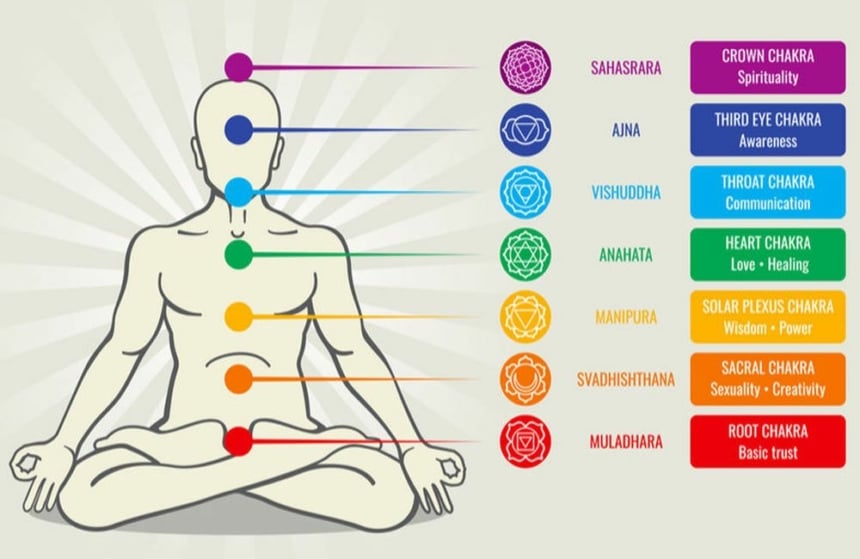What Do Chakras And Their Symbols Mean And How They Impact Our Life
By Himanshu JoshiYogachakra, symbolsChakra in Sanskrit means a wheel or a circle. Do you know we have chakras in our body too? As per ancient texts, chakras are the energy centers in our body that controls the flow of pranic energy.
There are days when you feel completely charged, refreshed for the day ahead, while on some days you don’t feel like getting out of bed, let alone carrying out your daily routine. The flow of energy in our body influences our mind and our body. If there is an imbalance, our physical and mental health gets affected.
Each chakra is denoted with a symbol made up of geometric shapes that denote different things. Each symbol or mandala has been defined by Tantric texts and has a deeper meaning connected with an individual’s spiritual journey. Understanding chakras and their symbols can help you lead a more meaningful and fulfilled life.
So what exactly are chakras and where are these energy centers located in our body? How do we know that our chakras are not in balance? Is there something that we can do to balance chakras if they are not? What are the symbols and their significance for each of these chakras? Let’s find out in this article.
The Seven Chakras
While there are a lot of chakras in the body that controls the flow of pranic energy, seven main chakras located along the spine starting from the base of it find mention in the ancient texts.
Muladhara or Root Chakra
Whatever you do in life, if your basics are right, nothing can shake you as you will endure it all.
Muladhara or Root chakra, the first one and perhaps the most important one in leading a practical life, is situated at the base of spine and is represented with the color red. Like its name, the chakra is responsible to keep us grounded and give us a feeling of overall well-being and security.
When underactive a person feels fearful, insecure, and unambitious. When overactive, a person may feel materialistic and hoard things that are not important for a false sense of security. Thus it is important to have this chakra in balance to have a strong foundation in life. Working on your Muladhara Chakra provides you with health, stability, and fulfillment in life without going overboard.
The process of transformation starts from here and until you bring this chakra in balance and your foundation is weak, there are chances you would not be able to master the other chakras.
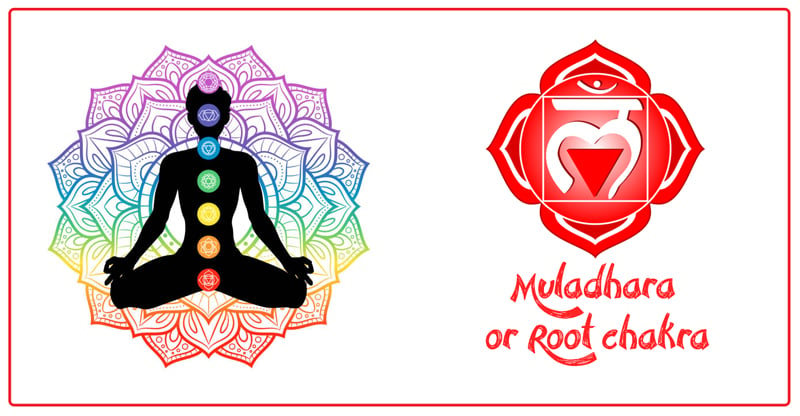
Symbol Decoded
Each of the four petals of lotus denotes different aspects of consciousness – Manas (mind), Buddhi (intellect), Chitta (consciousness), Ahamkara (ego). Yellow square at the center symbolizes life energy, stability, and rigidity. The inverted triangle in the middle symbolizes the element of earth.
Svadhisthana or Sacral Chakra
There is a reason why some people are more creative and adventurous than others, while others are stuck in the monotonous routine whether they like it or not. Probably it is to do with an imbalanced chakra that blocks the much-needed energy for creativity and pleasure. Svadhisthana or the sacral chakra is the second primary chakra located just below the navel and is associated with creativity, pleasure, and freedom of expression. It is considered the center for our emotions and is related to sexuality, intuitiveness, self-worth, compassion, and our needs and desires. The color associated with the chakra is orange. When this chakra is blocked people may feel fear, have mood swings, depression, lack creativity.
When this chakra is in balance you feel passionate, fulfilled, and have a general sense of well-being. You are able to express yourself creatively and freely.
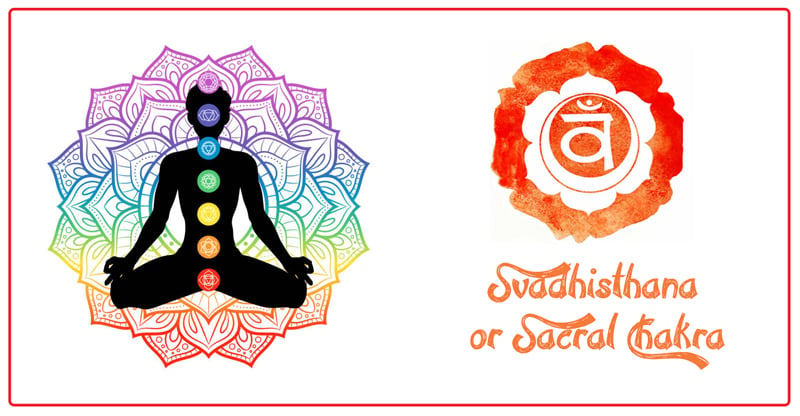
Symbol decoded
Six-Petalled Lotus denotes six emotions that need to be get rid of to balance svadhisthana – anger, jealousy, cruelty, hatred, pride and desire. The circles symbolize the cycle of birth, death, and rebirth while there is also a crescent moon shape that shows the connection between creativity and the phases of the moon.
Manipura or Solar Plexus Chakra
If you often feel uncontrollable rage, ego issues, and difficulty in understanding other’s points of view, you may need to work on your Solar Plexus Chakra. Solar Plexus Chakra or Manipura is the third chakra. It is located between ribcage and navel and is associated with emotions like ego, anger, and aggression. Its Sanskrit name Manipura means city of jewels and it is associated with color yellow.
Solar Plexus Chakra is related to an individual’s willpower, commitment, and self-esteem and when not working properly, physical problems like digestion issues, diabetes, liver problems may occur. If blocked, one’s self-esteem may be affected and fear doubts reign supreme. It may make a person lacking in empathy and someone who procrastinates. However, if overactive, this chakra may make a person egoistic and obsessed with power. It is important to keep this chakra balanced.
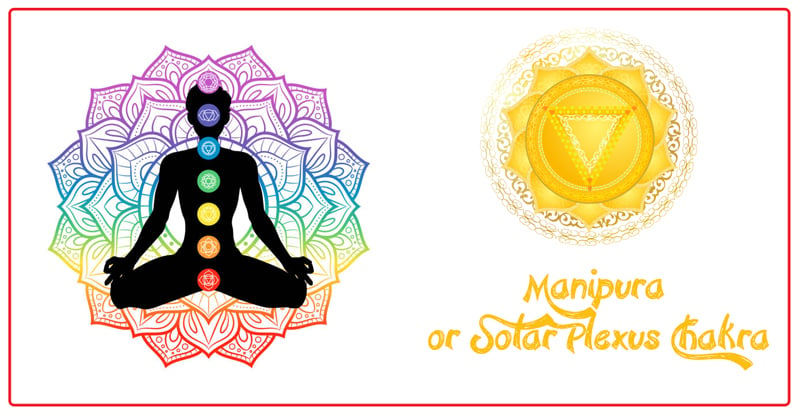
Symbol decoded
The ten petals denote ten Pranas in your body. The inverted triangle shows the energy of the lower three chakras are spreading up to the higher chakras.
Anahata or Heart Chakra
A loving heart knows how to forgive and still keep loving others as it can feel compassion, empathy and deep fondness for others. What makes for such a loving person? Heart chakra, the fourth primary chakra, if in balance makes you that person. Called Anahata in Sanskrit, it the word translates to unhurt. The chakra is located at the centre of the spine at heart level and is connected to organs like heart and lungs. This chakra connects the higher chakras to the lower ones and is denoted by the colour green.
The person whose Heart Chakra is blocked may experience emotions like anxiety, anger, jealousy, mood swings. Overactive heart chakra may lead to high blood pressure, heart palpitations and other cardiovascular problems.
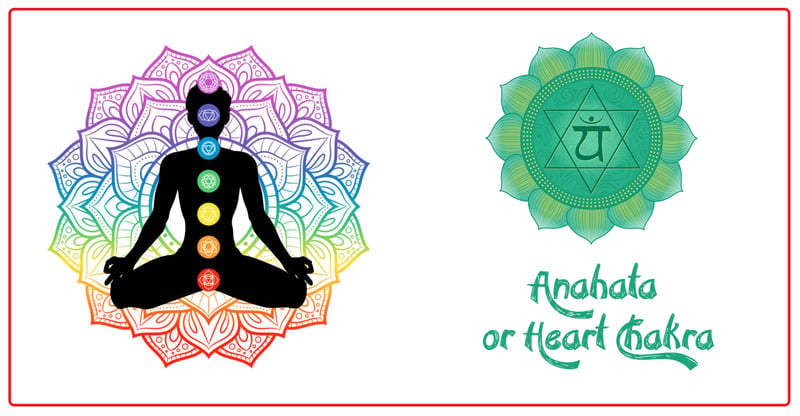
Symbol decoded
The heart chakra is represented by the two triangles – one upward and the other downward forming the shape of a six-point star. It represents the combination of masculine and feminine energy. The six-point star in combination with the 12 petals represents 72,000 energy channels, or nadis (6,000 x 12 = 72,000). It also shows how Anahata is the central chakra that connects the whole system.
Visuddha or Throat Chakra
If you have been among those who exactly know what to say, how to say, and where to say, then your throat chakra is beautifully balanced. One of the spiritual chakras, Visuddha or Throat Chakra, the fifth chakra is denoted by the colour blue and is related to speaking out the inner most thoughts with utmost ease.
The ruler of all verbal communications, Visuddha or throat chakra controls flow of energy around throat, thyroid, parathyroid, neck, mouth, tongue and jaw. A block in this chakra means the person is not able to express feelings or fear judgment while speaking. A blocked throat chakra means you cannot speak the truth freely fearing what the other person will think. The physical symptoms may include sore throat, thyroid issues, headache, stiffness in shoulders and neck.
On the other hand, if somebody has an overactive throat chakra, the person may speak more than required and will not allow the other person to speak, being dominating and over-critical. It is important to have this chakra in balance as it is the communication that makes a big impact in how a person will feel overall.
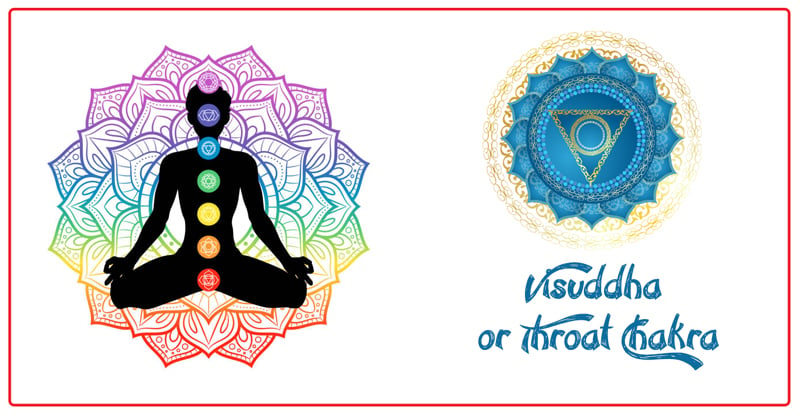
Symbol decoded
The triangle in this symbol represents energy moving upward, collecting knowledge towards enlightenment. The 16 petals are associated with 16 vowels of the Sanskrit language. The pronunciation of these vowels is light so they represent the airy quality of communication.
Ajna or Third Eye Chakra
When you are able to look at the world with a detached view, understanding the connection and interaction between the physical and spiritual world, you have a fine tuned third eye Chakra or Ajna. Located between the eyebrows and represented with colour indigo, the sixth chakra rules eyes, head and lower parts of the brain.
Your third eye chakra is connected with your intuition, intellect, and wisdom. It allows you to look at the bigger picture and helps you be wise and spiritual. When you are unable to listen to your inner voice or are not able to see the obvious, this means your chakra is blocked and needs to be worked upon. When that is the case you may be more judgmental, indecisive, have anxiety about the future, and be introverted. With an overactive third eye, sometimes our intuitive ability may be overwhelming.
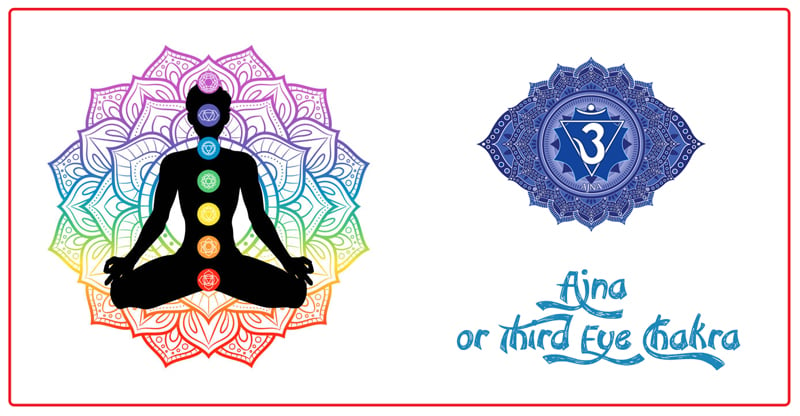
Symbol decoded
There is an inverted triangle which is the connection to true enlightenment. The triangle represents the knowledge and lessons of the lower six chakras being gathered and expanded into your consciousness.
Sahastrara or Crown Chakra
Crown Chakra or Sahastrara is the seventh and last central chakra which is the highest spiritual chakra. Unlike other chakras, it is rare to find access to it. It connects you to the higher self and will lead to enlightenment and high levels of energy. People who have opened this chakra have inner wisdom and connection with the universe. If not balanced, one may feel disconnection from the outside world and feeling of lack of purpose. One should continuously practice meditation to open this chakra.
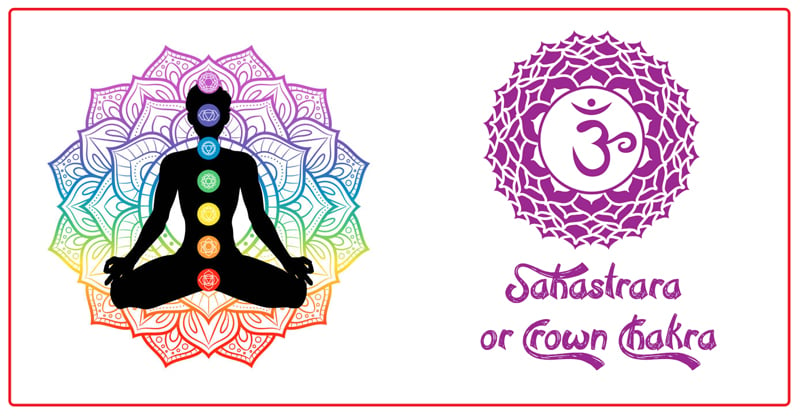
Symbol decoded
This symbol has the divine circle and the lotus flower, which denotes our connection to Brahma. It also represents our divine unity with other beings and the universe.

